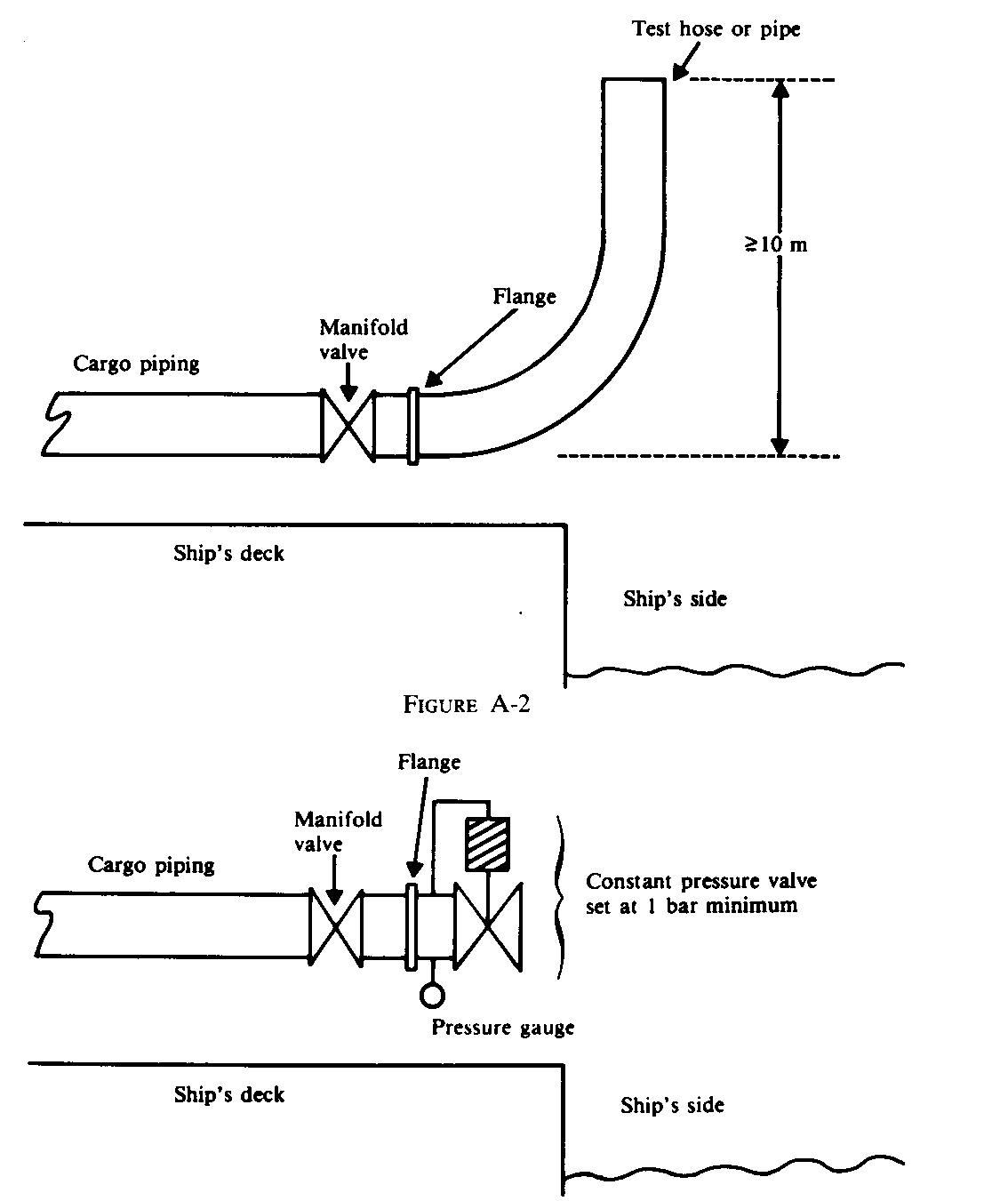| THIRD SCHEDULE |
| Regulation 7 (1) |
| Standards for Procedure and Arrangements for the Discharge of Noxious Liquid Substances (called for by Annex II of MARPOL 73/78, as amended) |
| |||||||||||||||||||||||||||||||||||||||||||||||||||||||||||||||||||||||
| (1) Annex II of the International Convention for the Prevention of Pollution from Ships, 1973, as modified by the Protocol of 1978 (MARPOL 73/78) and as further amended by the Organisation (hereafter referred to as Annex II) inter alia provides for the control of operational discharges of noxious liquid substances carried in bulk by ships. Operational discharges in this context mean the discharges of noxious liquid substances or water contaminated by these substances which are the result of cargo tank and line washing, deballasting of unwashed cargo tanks or cargo pump room bilge slops. |
| (2) Annex II prohibits the discharge into the sea of noxious liquid substances except when the discharge is made under specified conditions. These conditions vary according to the degree of hazard a noxious liquid substance poses to the marine environment. For this purpose the noxious liquid substances have been divided into four categories, A, B, C and D. |
| (3) Regulation 5 of Annex II specifies the conditions under which discharge of residues of categories A, B, C and D substances may take place. These conditions, which are not reproduced in this document, include such parameters as: the maximum quantity which may be discharged into the sea, speed of ship, distance from nearest land, depth of water, maximum concentration of substance in ship’s wake or dilution of substance prior to discharge. |
| (4) For certain sea areas, referred to as “Special Areas”, more stringent discharge criteria apply. |
| (5) The standards for procedures and arrangements called for by Annex II (hereafter referred to as the Standards) have been developed in response to resolution 13 of the International Conference on Marine Pollution, 1973, and in compliance with Regulations 5, 5A and 8 of Annex II. The Standards provide a uniform basis for the guidance of the Parties to MARPOL 73/78 in approving procedures and arrangements for the discharge of noxious liquid substances of a specific ship. |
| (6) The Standards will take effect on 6th April 1987, the date of implementation of Annex II, and apply to all ships which carry noxious liquid substances in bulk. |
| (7) The Annex II requirements are not restated in the Standards. To ensure compliance with Annex II, the requirements of Annex II and those contained in the Standards should be considered together. |
| (8) Annex II discharge requirements and certification requirements have been interpreted as requiring each ship to have a Procedures and Arrangements Manual approved by the Administration. The Manual should contain the information specified in the Standards and the requirements of Annex II. Compliance with the procedures and arrangements set out in a ship’s Manual will ensure that the discharge requirements of Annex II are met. |
| (9) Regulation 5A of Annex II requires that the efficiency of the cargo pumping system of a tank certified fit to carry Category B or C substances be tested in accordance with Standards developed by the Organisation. The test procedure is set out in the Standards. The pump stripping efficiency determined by the test will be assumed to be the stripping efficiency achieved when unloading the tank in accordance with the specified procedures. |
| (10) The presence of a “sheen” resulting after discharges of some Category B, C and D substances should not be regarded as contrary to the principles of Annex II, provided that the discharges have been made in accordance with the Standards. |
| (11) Throughout the Standards the word “discharge” is used to refer to the discharge of residues or residue/water mixtures either into the sea or to reception facilities, whilst the word “unloading” is used to refer to the unloading of cargo to receivers, terminals or ports. |
|
|
|
|
|
|
|
|
|
|
|
|
|
| |||||||||||||||||||||||||||||||||||||||||||||||||||||||||||||||||||||||||||||||||||||||||||||||||||||||||||||||||||||||||||||||||||||||||||||||||||||||||||||||||||
|
|
|
|
|
|
|
|
|
| |||||||||||||||||||||||||||||||||||||||||||||||||||||||||||||||||||||||||||||||||||||||||||||||||||||||||||||||||||||||||||||||||||||||||||||||||||||||||||||||||||||||||||||||||||||||||||||||||||||||||||||||||||||||||||||||||||||||||||||||||||||||||||||||||||||||||||||||||||||||||||||||||||||||||||||||||||||||||||||||||||||||||||||||||||||||||||||||||||||||||||||||||||||||||||||||||||||||||||||||||||||||||||||||||||||||||||||||||||||||||||||||||||||||||||||||||||||||||||||||||||||||||||||||||||||||||||||||||||||||||||||||||||||||||||||||||||||||||||||||||||||||||||||||||||||||||||||||||||||||||||||||||||||||||||||||||||||||||||||||||||||||||||||||||||||||||||||||||||||||||||||||||||||||||||||||||||||||||||||||||||||
| |||||||||||||||||||||||||||||||||||||||||||||||||||||||||||||||||||||||||||||||||||||||||||||||||||||||||||||||||||||||||||||||||||||||||||||||||||||||||||||||||||||||||||||||||||||||||||||||||||||
|
|
[S 262/94 wef 01/07/1994] |







